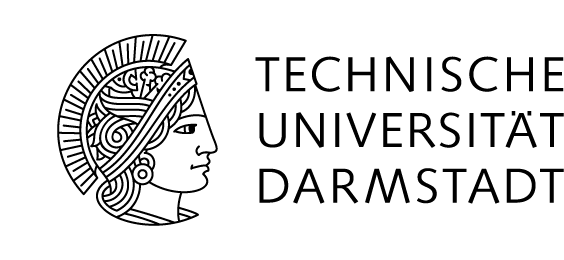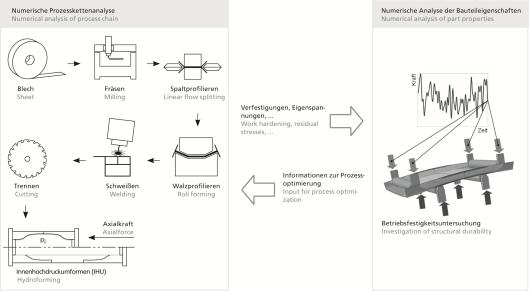C3 | Subproject C3: Computer aided part optimization with numerical process chain analysis
Motivation
Linear flow splitting offers the possibility to manufacture bifurcated profiles made of sheet metal in integral style without lamination of material. By using this method in a process chain to manufacture profiles with several chambers sophisticated structures can be manufactured. During the production of these profiles process-related changes in the material properties such as local hardening and residual stresses are generated so that homogeneous material in the manufactured part can no longer be assumed. A reliable analysis of structural durability is only possible by considering these changes.
Objectives
The evaluation und optimization of bifurcated components regarding the interaction between production process and the useful properties can only be carried out economically by numerical process simulations.
The ambition is to simulate the complete process chain from the plate to the spread component as well as the occurring service loads in order to consider the manufacturing process in the analysis of structural durability. In the future the material damage has to be represented numerically, to predict the collapse location and fatigue life more precisely. These investigations are focussed on multistage-cold-formed components subjected to variable amplitude loading.
Approach
During the first period every forming subprocess (linear flow splitting, roll forming) of the process chain was simulated and the influence of different parameters were studied. The results of one forming stage were the input informations for the next step simulation. Afterwards the process has to be optimized for the characteristics of the manufactured components. In the second period specific material parameters will be validated by experimental investigations and compared with the FE-simulations to represent the material damage numerically. These FE-simulations are the basis for numerical models, which integrate the inhomogeneity of material properties into fatigue life assessment. For considering residual stress relaxation, advanced material models, e.g. the Jiang-Model, are used.
Results
With the development of the new “Cut And Expand Method” it is possible to simulate the process-chain efficiently and effectively. Thereby the saving of numerical time and the improvement of the results was in the focus of the research. The more precise analysis of component strength permits the utilization of light weight design potentials given by local work hardening.


